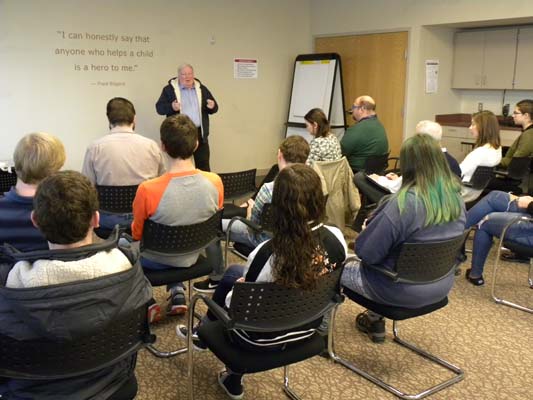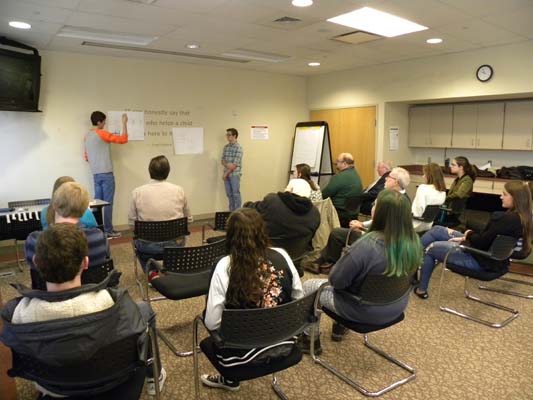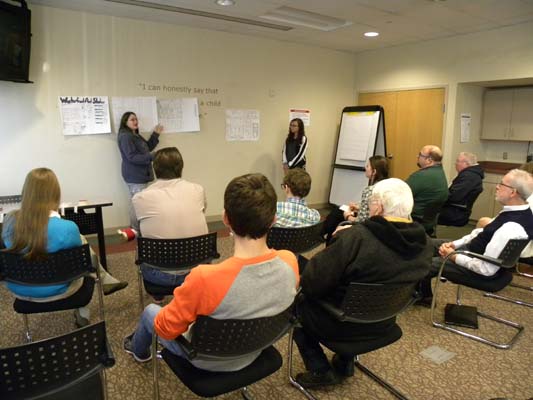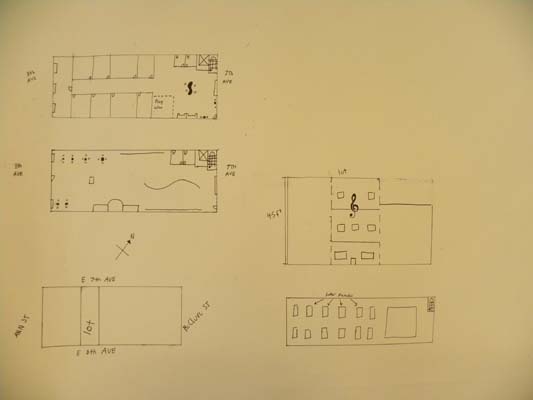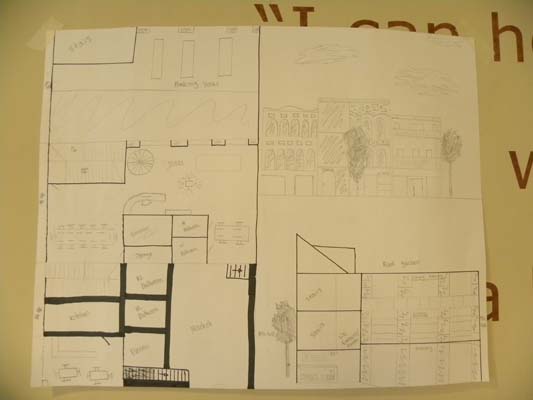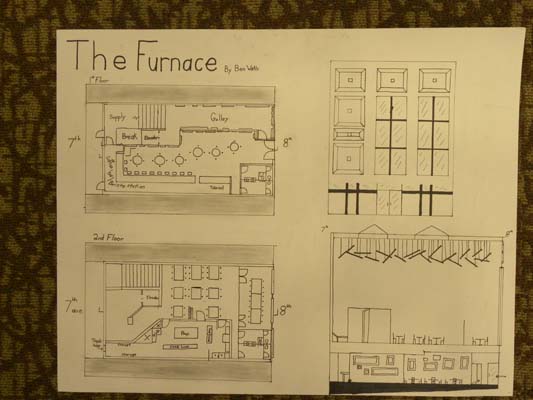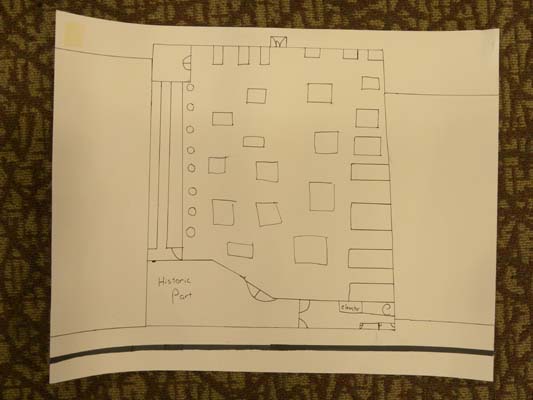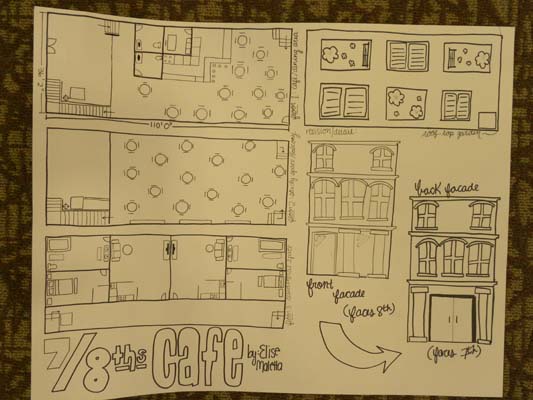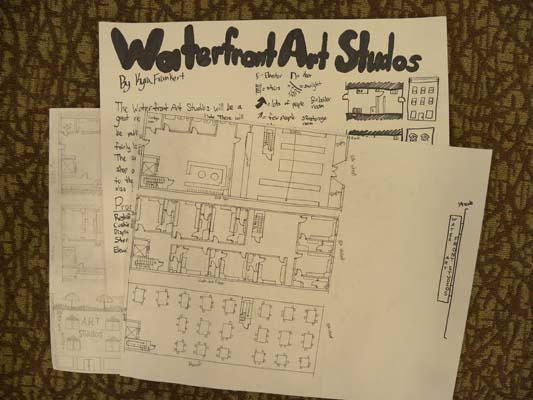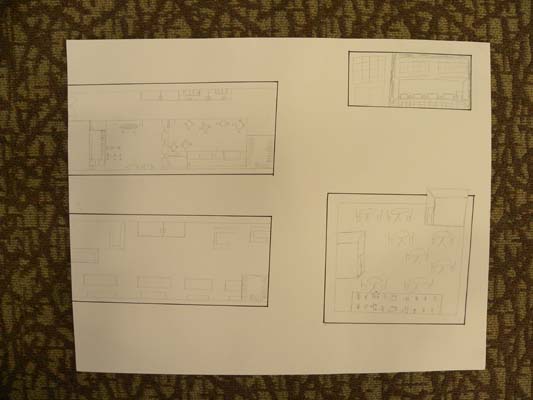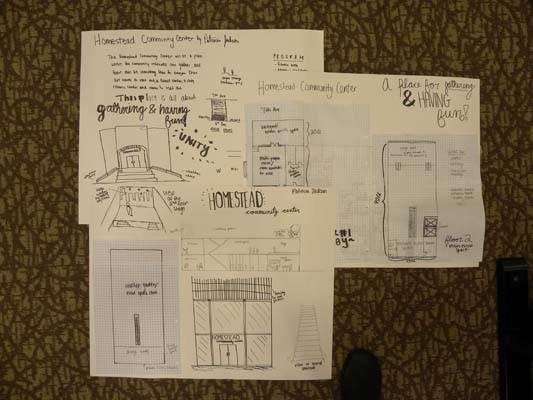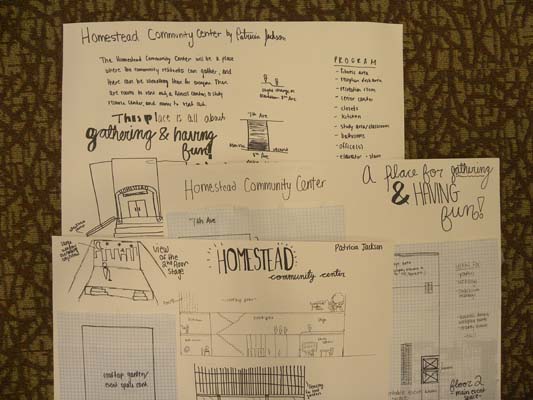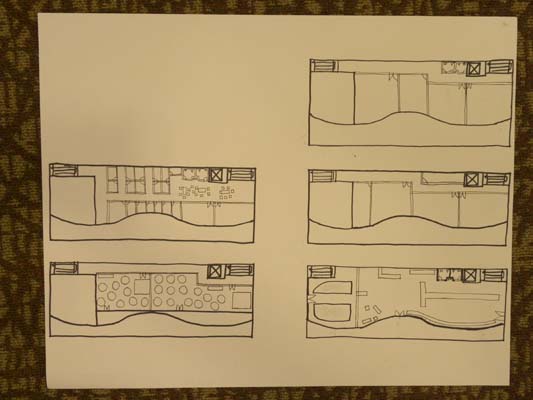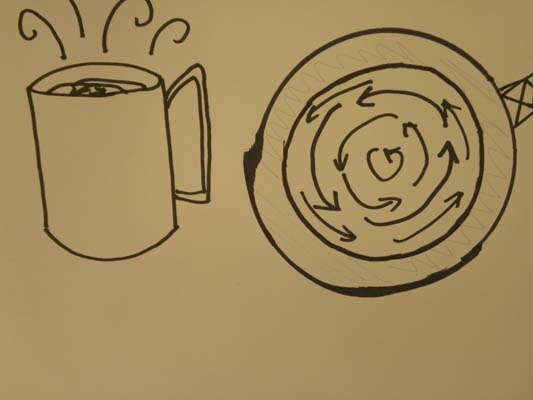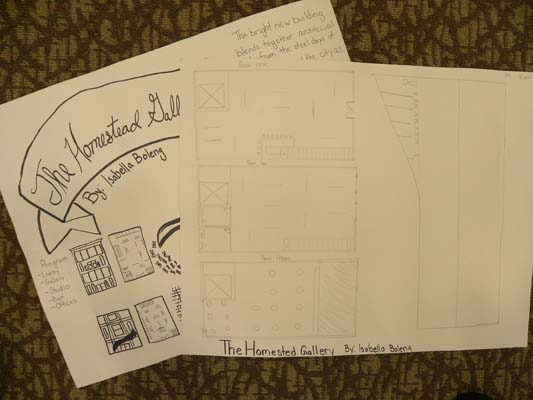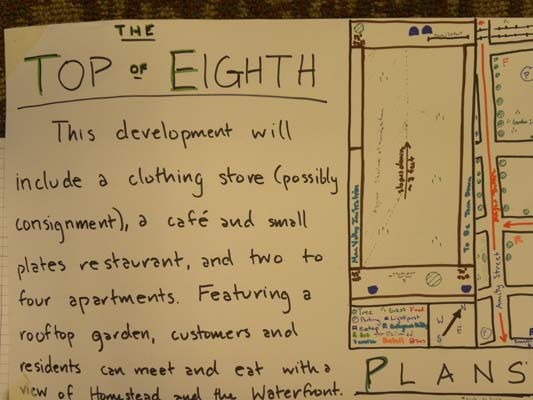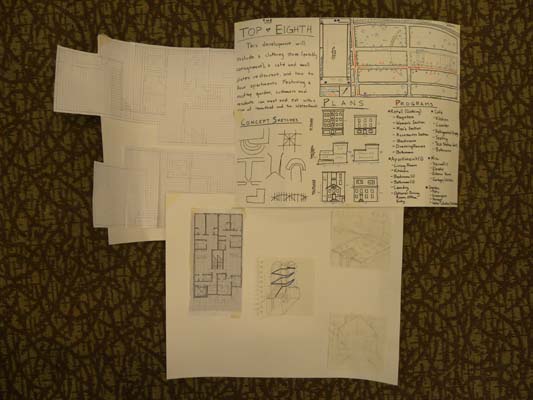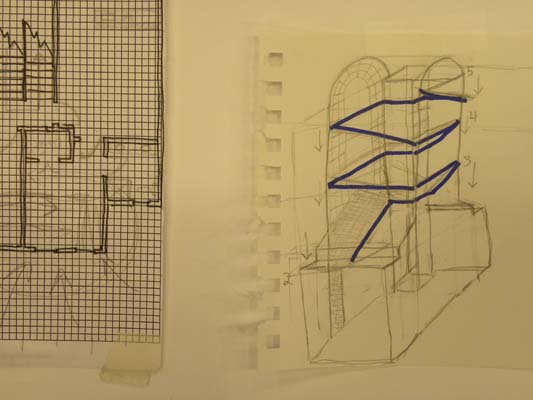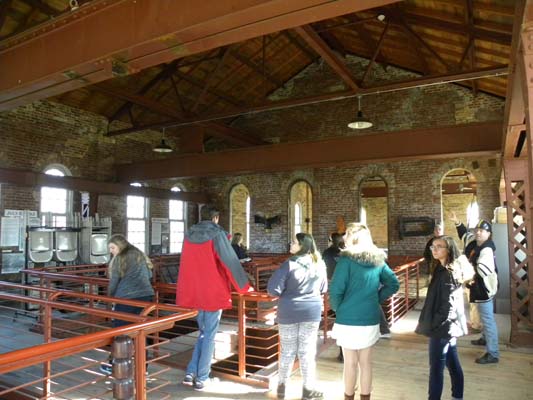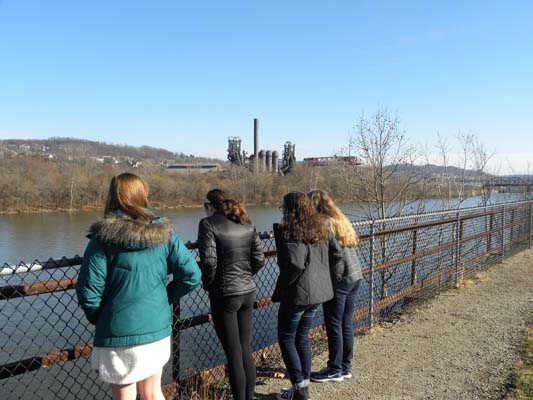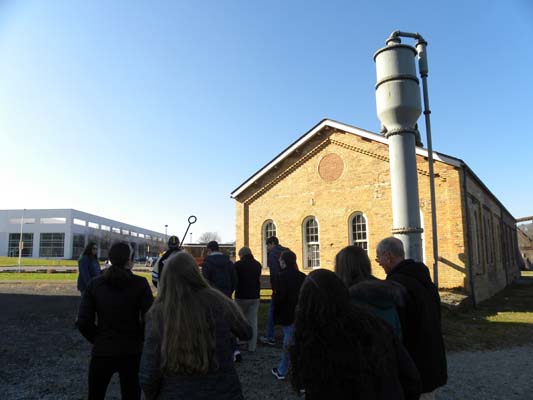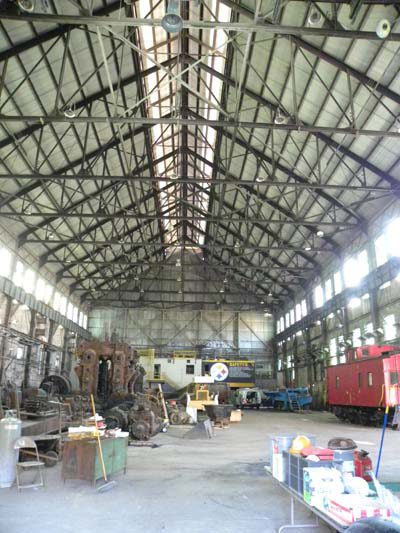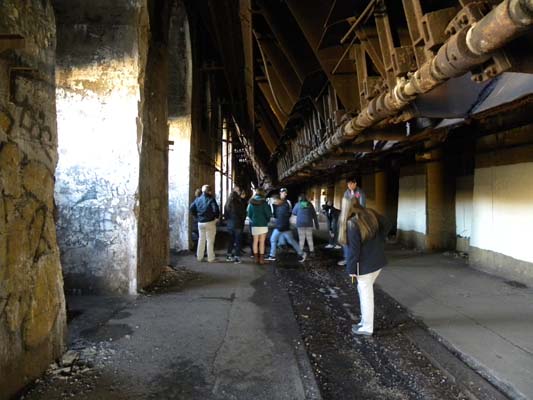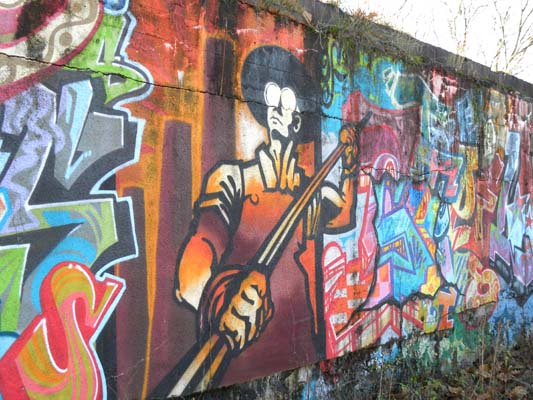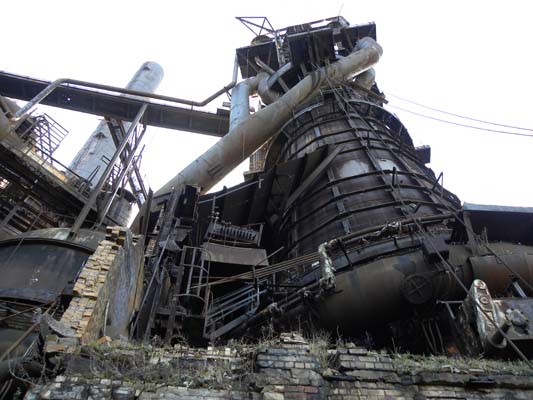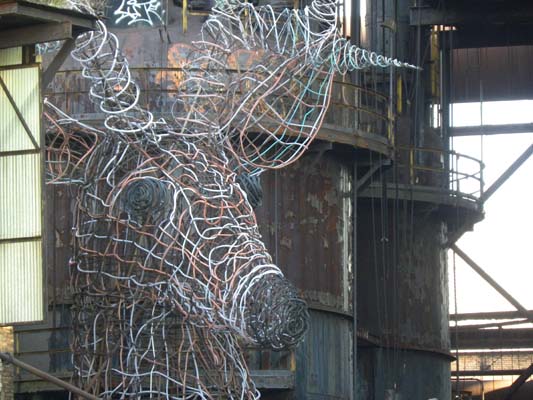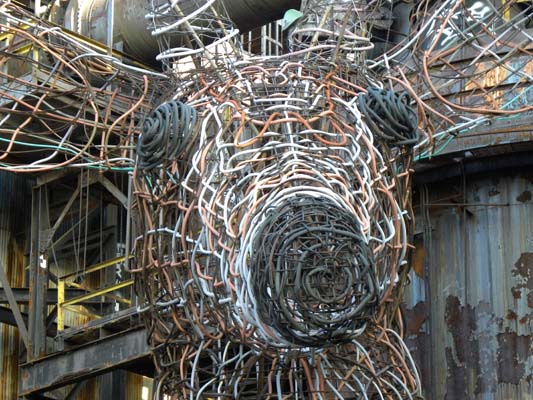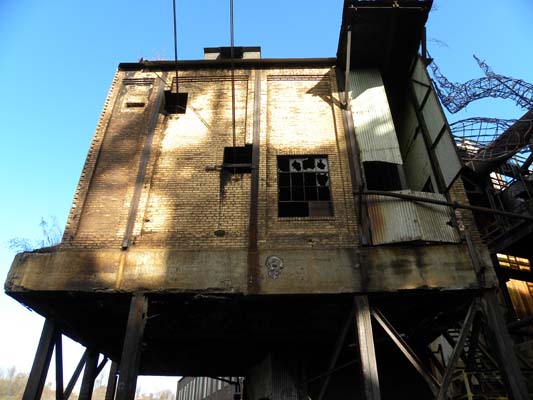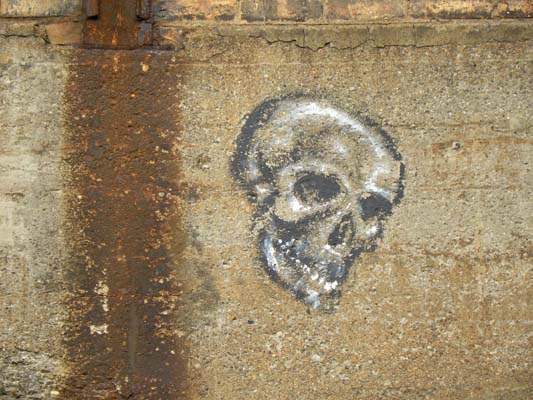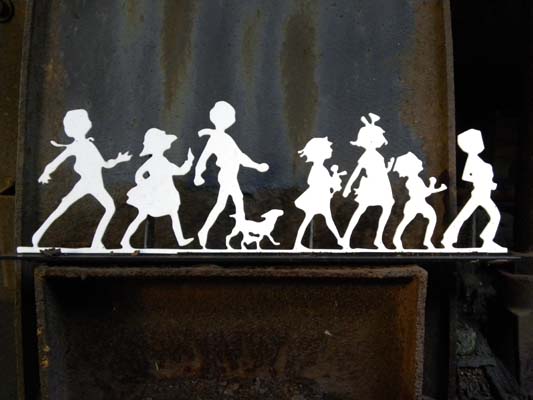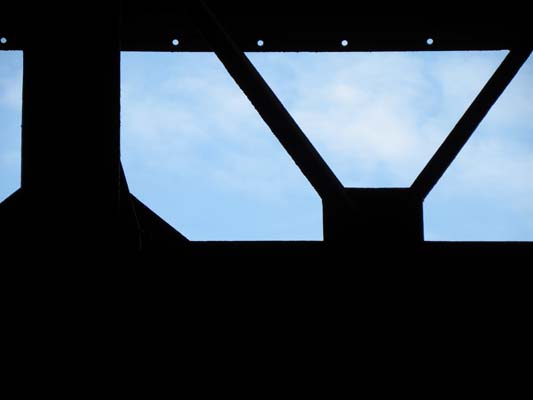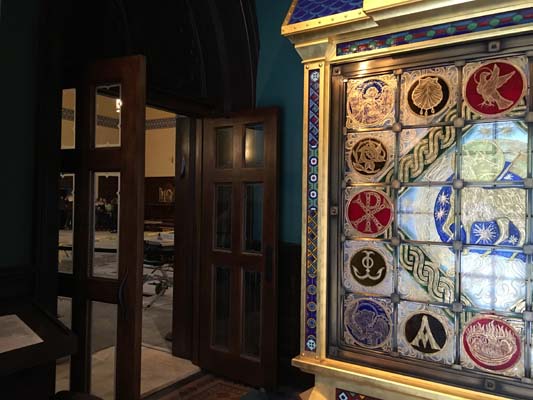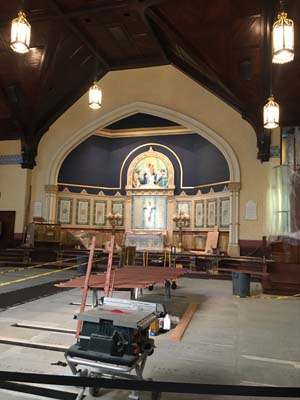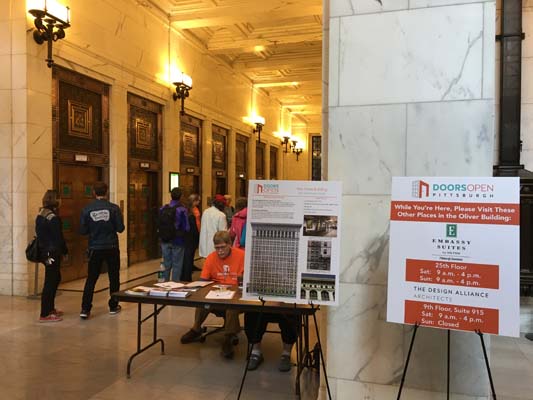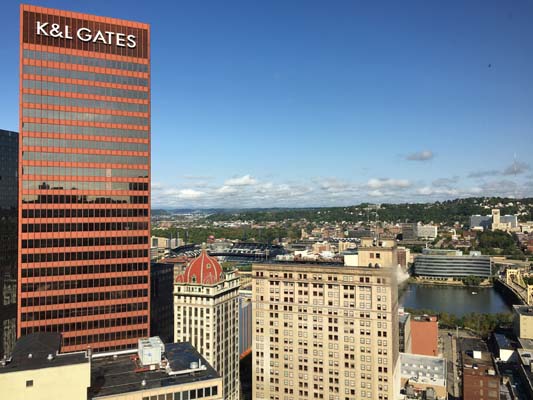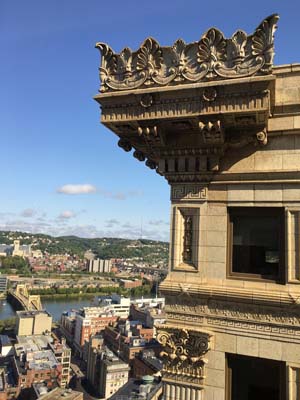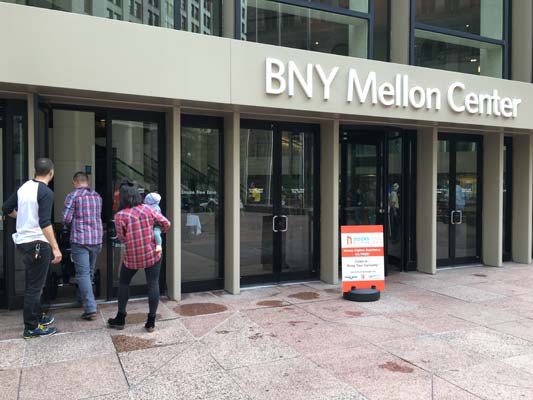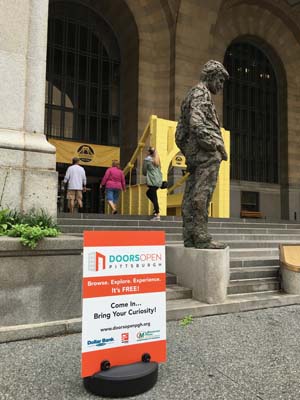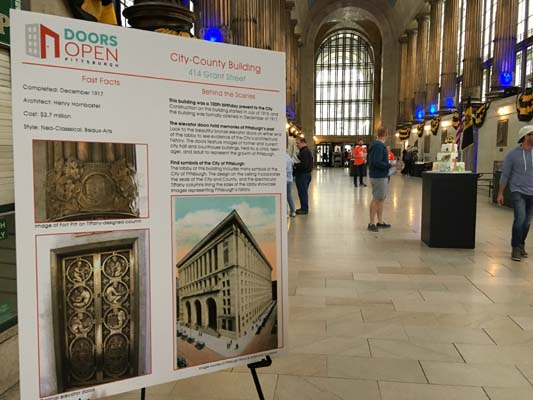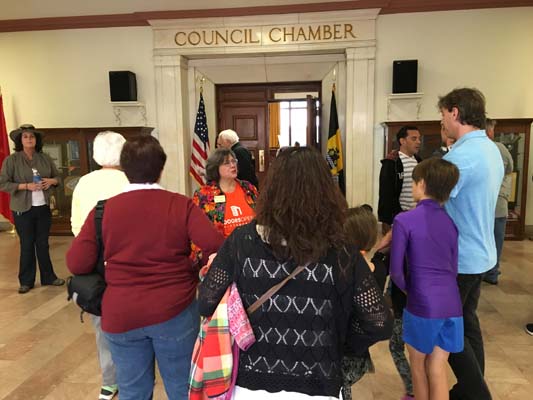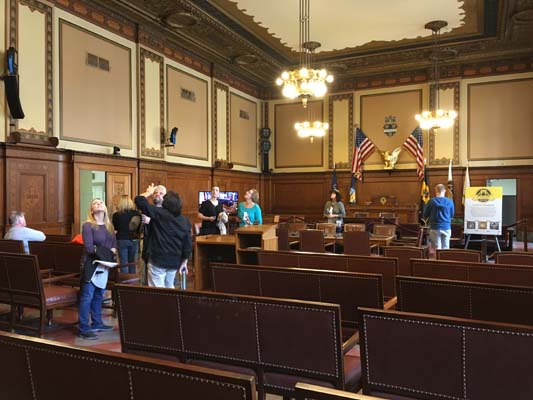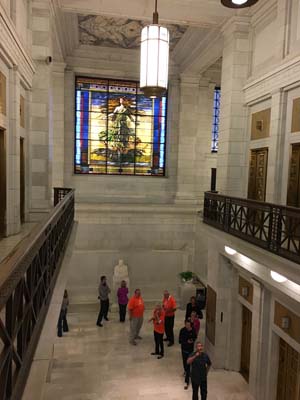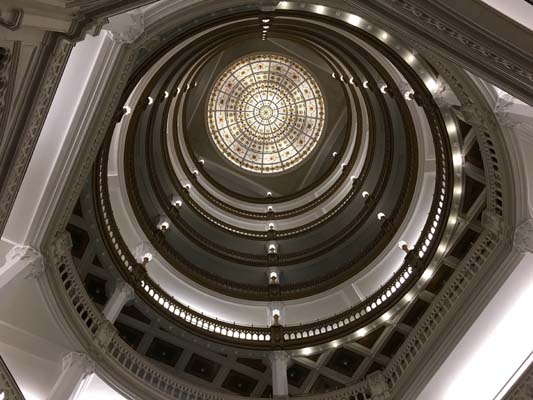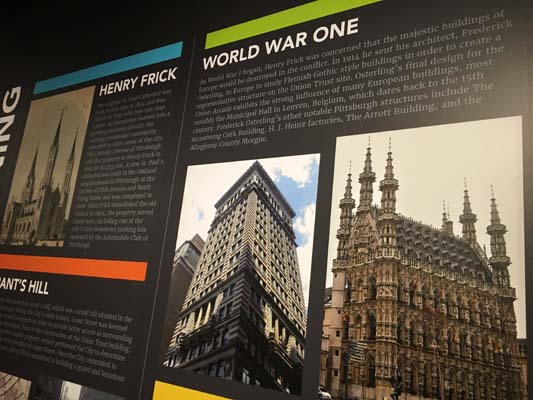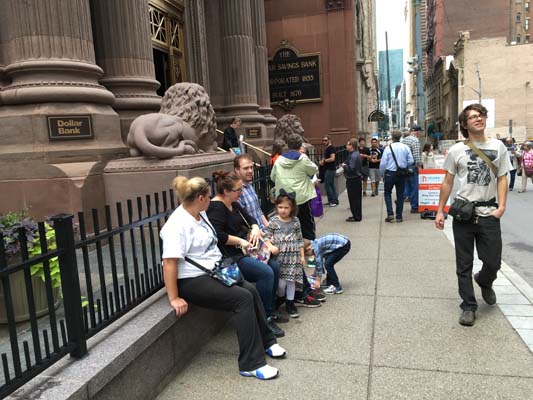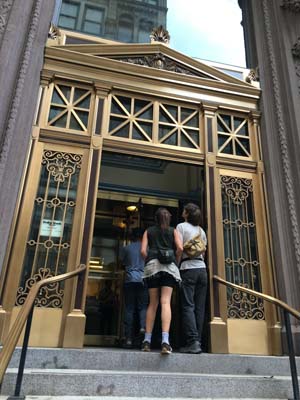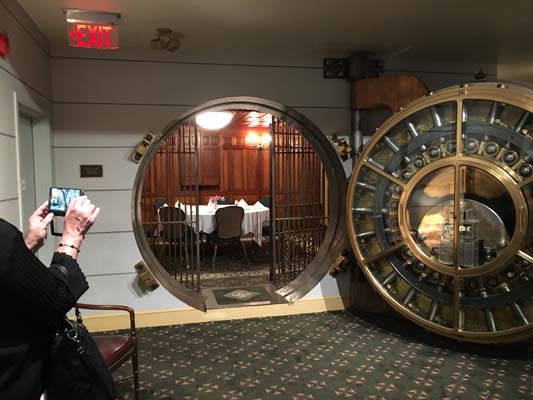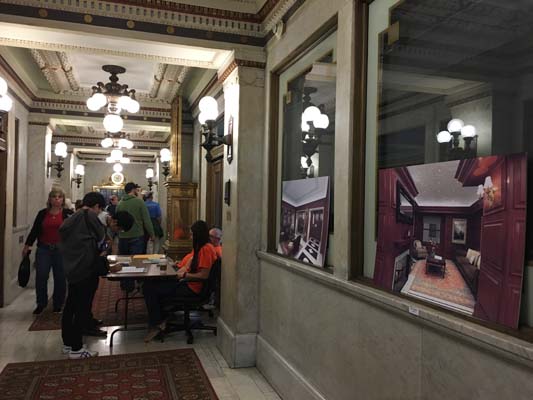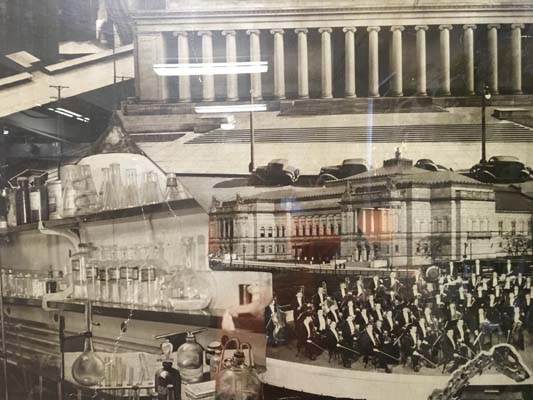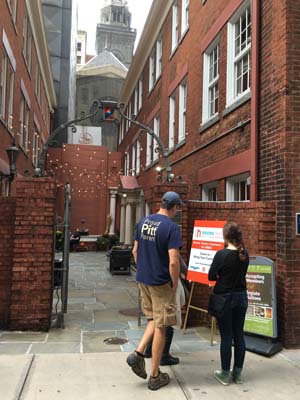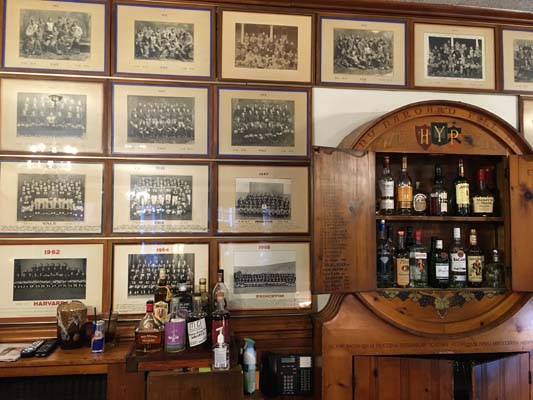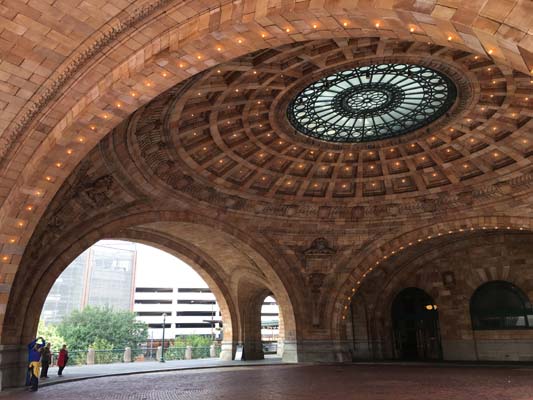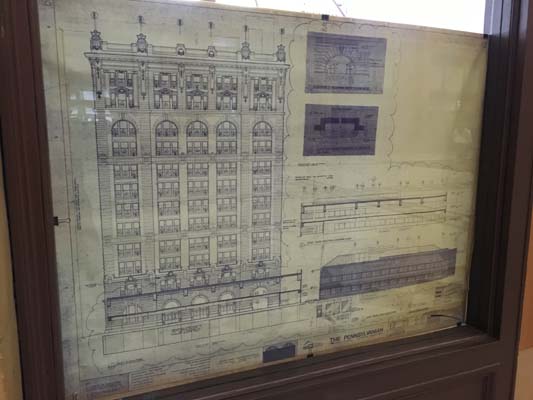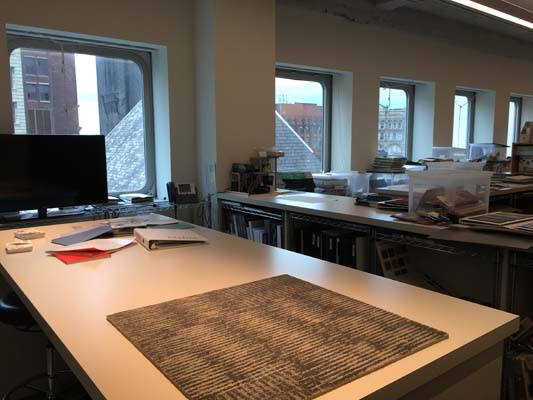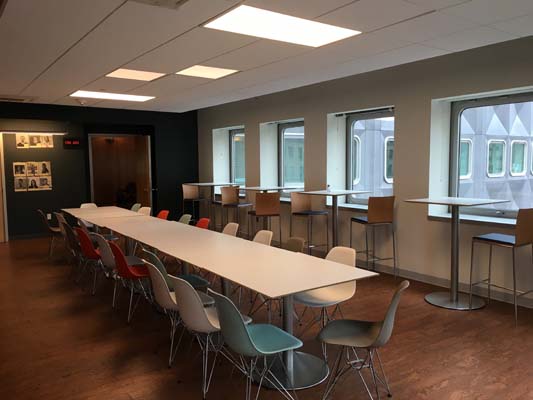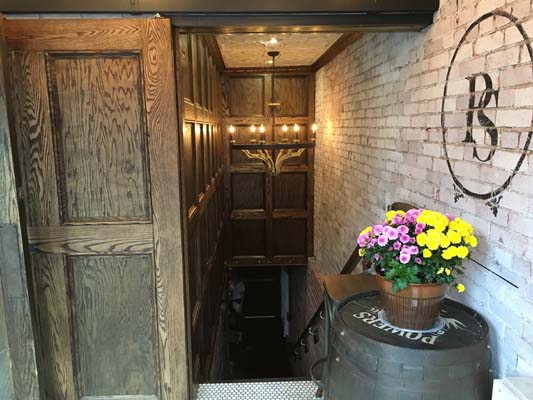
Category Archive: PHLF News
-
Architecture Feature: Frank & Seder Building
Frank & Seder Department Store, 441 Smithfield Street [1918-1954]
 On January 19, 2017, an article “Oxford abandons plans to build office tower” appeared in the Pittsburgh Post-Gazette on pp. A-1 and A-9. Author Mark Belko observed that Oxford Development Co. had given up plans for a “big iconic skyscraper in Downtown Pittsburgh” and had sold the property on Smithfield Street between Fifth and Forbes avenues to Stark Enterprises of Cleveland who “according to sources, intends to renovate the existing building––the former Frank & Seder department store. It sits across the street from the old Macy’s/Kaufmann’s department store, which also is being redeveloped.”
On January 19, 2017, an article “Oxford abandons plans to build office tower” appeared in the Pittsburgh Post-Gazette on pp. A-1 and A-9. Author Mark Belko observed that Oxford Development Co. had given up plans for a “big iconic skyscraper in Downtown Pittsburgh” and had sold the property on Smithfield Street between Fifth and Forbes avenues to Stark Enterprises of Cleveland who “according to sources, intends to renovate the existing building––the former Frank & Seder department store. It sits across the street from the old Macy’s/Kaufmann’s department store, which also is being redeveloped.”With its history and architectural significance, the former Frank & Seder building is worth saving and adapting for new uses. As a contributing structure in a downtown National Register district, the stage is set for the developer to take advantage of the federal 20% investment tax credit for the “certified rehabilitation” of an income-producing property and/or receive benefits through the tax code by donating a preservation easement to a qualified recipient, such as the Pittsburgh History & Landmarks Foundation.
Historical and Architectural Significance
In 1907, Jacob H. Frank and Isaac Seder opened a store at 344 Fifth Avenue devoted to “ladies specialties.” In 1917 Frank & Seder began planning for a new, larger building in the 400 block of Smithfield Street. The store opened on May 21, 1918 and is a contributing structure in the expanded Pittsburgh Central Downtown Historic District (placed on the National Register May 2, 2013). The nomination form states:
“The seven-story building . . . was built . . . in a rather severe Classical Revival Style. The first story features polished stone walls framing large display windows, the second and third floors are grouped under fluted Ionic pilasters, and the fourth through sixth stories are simple brick walls with rectangular windows cut-out. The whole department store is capped like a renaissance palace with a projecting cornice and a recessed seventh story.”
Three architectural firms worked together on the building: Charles Bickel, MacClure & Spahr, and William E. Snaman.
Charles Bickel (1852-1921) designed many downtown commercial buildings, including the 1898 Kaufmann’s Department Store building across the street.
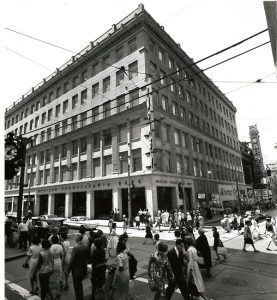 The firm of MacClure & Spahr was formed in Pittsburgh in 1901 by Colbert A. MacClure (1879-1912) and Albert H. Spahr (1875-1966), graduates of M.I.T. in Cambridge, MA, the oldest architecture school in the USA. Their buildings include the Mon Incline Carson Street Station, the former Meyer, Jonasson & Co. store at 606 Liberty Avenue, and the home of George M. Laughlin, Sr. on Woodland Road, later owned by Andrew W. Mellon.
The firm of MacClure & Spahr was formed in Pittsburgh in 1901 by Colbert A. MacClure (1879-1912) and Albert H. Spahr (1875-1966), graduates of M.I.T. in Cambridge, MA, the oldest architecture school in the USA. Their buildings include the Mon Incline Carson Street Station, the former Meyer, Jonasson & Co. store at 606 Liberty Avenue, and the home of George M. Laughlin, Sr. on Woodland Road, later owned by Andrew W. Mellon.The best-known Downtown building by William E. Snaman (1875-1953) is the former Donahoe’s Market and Restaurant with its imposing Classical colonnade, now occupied by CVS Pharmacy on Forbes Avenue between Market Square and Wood Street.
A collection of Seder Family Photographs, 1900-1940, is in the Rauh Jewish Archives at the Heinz History Center. Among the photos are “building construction, exterior and interior shots of the Frank & Seder store.” The collection guide can be read and downloaded on the Historic Pittsburgh website/Finding Aids.
-
PHLF’s Newest Poetry and Art Book, by Pittsburgh Gifted Center Students
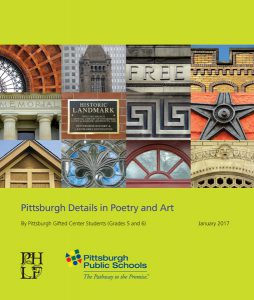 Poems and charcoal drawings by 41 fifth- and sixth-grade students from the Pittsburgh Gifted Center are featured in a 78-page book, to be released in January by PHLF. This edition of Pittsburgh Details in Poetry and Art is dedicated to Ann Power Wardrop (1915-2016), a devoted preservationist and trustee emeritus of PHLF who inspired us to help young people see that historic places in Pittsburgh are works of art, worthy of restoration, and sources of great beauty, enriching our daily lives and contributing to our unique cultural heritage.
Poems and charcoal drawings by 41 fifth- and sixth-grade students from the Pittsburgh Gifted Center are featured in a 78-page book, to be released in January by PHLF. This edition of Pittsburgh Details in Poetry and Art is dedicated to Ann Power Wardrop (1915-2016), a devoted preservationist and trustee emeritus of PHLF who inspired us to help young people see that historic places in Pittsburgh are works of art, worthy of restoration, and sources of great beauty, enriching our daily lives and contributing to our unique cultural heritage.Click here to read five “group poems” about Pittsburgh and several individual poems. The students were required to use personification and to imagine what it would be like to be the architectural detail they selected.
Please visit our library on the fourth floor of The Landmarks Building to read the entire book, and to read many other Poetry and Art books published by PHLF since 2003.
-
Pittsburgh Colfax Comes to Life: Stories by Third-Grade Students
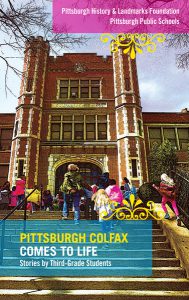 “Right away you want to pick up the book and read it,” said Al Tannler, PHLF’s historical collections director.
“Right away you want to pick up the book and read it,” said Al Tannler, PHLF’s historical collections director.“Thanks to funding support from foundations, EITC corporate donors, and our Named Fund donors,” said Executive Director Louise Sturgess, “PHLF is able to honor the work that students complete in educational programs by publishing books comprised of their writing and artwork. Out of the 60 or more student books we have published, Pittsburgh Colfax Comes to Life is one of the most appealing.”
The 120-page book, released on December 19, includes a list of the techniques PHLF uses in creating place-based educational programs, facts about Pittsburgh Colfax, and stories by 107 third-grade students who imagine being the school building.
Click here to see several pages of the book––and please come to our library on the fourth floor of The Landmarks Building to read the entire book. Only 200 copies of the book were printed and most were given to the third-grade students and Pittsburgh Public Schools.
-
Thank You, Intern
 We thank Heather Williams, a graduate student in Duquesne University’s Public History program, for volunteering in the fall of 2016. A resident of Wilkinsburg, Heather first became interested in PHLF after seeing the positive impact of our community development work in the Hamnett Place neighborhood.
We thank Heather Williams, a graduate student in Duquesne University’s Public History program, for volunteering in the fall of 2016. A resident of Wilkinsburg, Heather first became interested in PHLF after seeing the positive impact of our community development work in the Hamnett Place neighborhood.During her time at PHLF, Heather added information to our Architect’s Database, assisted with walking tours, helped organize and lead several educational programs, and proofread the Courthouse and Colfax books. After completing her volunteer internship with PHLF in December 2016, Heather Williams wrote:
“My experience at PHLF was a positive one, and I would highly recommend an internship with them to any students of history or other related fields. Sitting in a classroom learning about bringing history to the public, to all ages and walks of life, is one thing, but actually gaining hands-on experience doing so in the real world is just as valuable a skill.”
-
Architecture Apprentices Propose Solutions for Vacant Lot
PHLF’s place-based educational programs give students throughout the Pittsburgh region the opportunity to use a range of academic skills to solve real community problems and explore career interests in the process. We thank the McSwigan Family Foundation and many others for supporting our educational programs.
On December 7, 2016, twelve students from 10 school districts in Allegheny County presented their design solutions for a vacant lot at 307-09 East Eighth Avenue in Homestead. This was the fifth and final session in PHLF’s annual Architectural Apprenticeship program offered through the Allegheny Intermediate Unit.
Architects Paul Tellers and Raymond Bowman joined David Lewis (the distinguished urban planner, teacher, artist, and author), Samantha Carter from CMU’s School of Architecture and the Architecture Learning Network, Lloyd Cunningham, president of Homestead Borough Council, and Patrick Shattuck, real estate director for the Mon Valley Initiative in critiquing the students’ plans.
Students considered the needs of the community, green-building requirements, and their own personal interests in developing mixed-use concepts for the site. Ideas included a coffee shop and music shop with practice rooms; a deli-grocery store and branch library with internet access; a coffee bar and “The Furnace” restaurant with steel beams hanging from the ceiling; a bar and restaurant celebrating the history of the area; a cafe with apartments above and a rooftop garden; an art store and studio; a community-oriented restaurant; a community center with exercise rooms and a study resource center; a “Comfort Cafe” and residences; an art gallery and center for all the arts––drawing, sculpture, digital art, and writing; a cafe and clothing store with a rooftop garden; and an art gallery and studio designed to mix both the traditional and contemporary aspects of Homestead’s character.
In the gallery below are photographs of their designs and of their tour to Carrie Furnace with Rivers of Steel National Heritage Center.
-
Corporations Support PHLF through PA EITC Program
PNC Bank, First National Bank of Pennsylvania, Frank B. Fuhrer Wholesale Company, Maher Duessel, CPA, C. S. McKee, LP, and Hefren-Tillotson, Inc., contributed in December 2016 in support of PHLF’s “Building Pride/Building Character” educational program with the Pittsburgh Public Schools. They join Eat’n Park Hospitality Group, Inc. and Huntington Bank in contributing to PHLF through the state’s Educational Improvement Tax Credit (EITC) program.
“We are within reach of our $50,000 goal needed to support this exceptional program,” said PHLF Executive Director Louise Sturgess, and will continue fundraising in the new year.
Thanks to these gifts and support from PHLF, elementary and middle school students from about a dozen Pittsburgh Public Schools will be participating in various enrichment opportunities through early June that give them the chance to apply classroom learning to the real-world––and develop a sense of belonging and pride in their hometown.
Below are comments from teachers and parents who participated in PHLF’s “Building Pride/Building Character” program last year––and are thankful that the program continues.
- PHLF’s “Building Pride/Building Character” program provides wonderful educational experiences for our inner-city students. Thank you for donating towards the program! Money well spent! Thank you for a wonderful trip (as always)!
- Please continue to support this program. As a third-grade teacher for 16 years, this program is by far one of the most worthwhile and memorable to our students! Would love to attend for another 16+ years!
- Thank you for allowing this program to make Pittsburgh history come alive and be important/relevant to our youth!
- Thank you for giving my students the chance to explore artifacts that connect them to our city’s history. It is experiences like these that build a child’s awareness, respect, and interest in their city.
- Thank you for the opportunity to get our students out of the classroom and into a university campus. It makes the thought of further education more tangible.
- This is a worthwhile activity for all students. They learned so much about the college and city; it provides an opportunity they may not otherwise have.
- This program provides students a first step from school to career. The program is such that students’ enthusiasm is peaked to a career and thus motivation for academics is increased.
- The materials give “life” and “real world” experiences. Students need to touch and feel to bring this job “experience” to life.
- My students were completely engaged and had a wonderful experience. For many of my students, it was their first time experiencing authentic history.
- The students loved the trip and were constantly engaged in conversation. I also liked the way all subject areas were incorporated into the trip.
- Behavior continues to be an issue at our school. The character aspect of the program has become more and more important to me over the years of attending.
- The students walk away with pride and knowledge of their city.
- A great majority of students are ESL and had so many meaningful experiences about Pittsburgh that they will never forget.
- It was worthwhile because they have previously learned about all this information and were able to recognize it out in the real world.
- I have been on this field trip twice, with two daughters 6 years apart, and my husband went with our son 3 years ago. It was the most memorable and educational field trip any of our kids went on in elementary school. On today’s trip, one student said to me that she wishes she could do this trip every day.
- This program helps to develop the future citizens of Pittsburgh in a very unique way. Instilling a pride that lasts a lifetime.
- Great program for young citizens of Pittsburgh.
- I loved our guides. They showed love and passion about our city and history, and surely they passed it on to the kids.
- Really interesting to see Mayor’s office and hear from their Councilman. The kids were engaged most of the day which piqued their curiosity to ask great questions. Thanks for giving this opportunity to our children!
- This is such a FANTASTIC experience, and I appreciate what you have provided for our students.
- Some students would never have the chance or ability to experience all of the treasures of Downtown. This inspires them to want to come back with families and guide them.
- This was a wonderful experience for our students and they learned so much too. Often they learn things they can’t relate to, but this trip is so relatable and tangible to them and they retain so much of the information.
- Please continue donating so students can learn about the city where they reside. Thank you so much!
- This program has been a memorable experience and should continue for as long as possible. It remains one of my favorite programs from elementary school!
- PHLF is the best program I’ve experienced for field trips. Educational, informative, well organized!
- This program undoubtedly aligns with our curriculum. This trip offers more than teaching the facts about our city; it encourages children to take pride in their city.
- This is a wonderful program and we are thankful that you support our education and realize that seeing the buildings etc. is the best way to learn.
- I believe this is important because it helps the kids be proud of our city and want to stay here for college and to live.
-
Involving More than 12,000 People: Thanks to All
As a result of participating in your workshops, students become inspired. … The lessons fostered … encourage Heritage students to look more closely at their communities and to think about how places in their lives matter, not just to their generation but to past generations and generations to come. ––Rob Buffone, Principal, Heritage Elementary School
This year, PHLF’s education staff and docents led 211 tours and offered 46 presentations, 43 Building Pride/Building Character programs, 41 programs at the Landmarks Preservation Resource Center, 3 writing workshops, 2 Architectural Design Challenges, and 1 Architecture Apprenticeship program.
In addition, PHLF presented 8 scholarship and honorable mention awards; provided updated text and photos for a new edition of Pittsburgh Then and Now and published a second, updated edition of H. H. Richardson’s Allegheny County Courthouse & Jail Guidebook, by Albert M. Tannler. Staff and docents also provided essential support for the City’s year-long Bicentennial Celebration, Cram Jam, Doors Open Pittsburgh, and Symphony Splendor, among many other community events.
As a result, more than 12,000 people learned more about their community or city and learned to value the Pittsburgh region all the more, because of what has been accomplished and built here. “We receive so much positive feedback,” said Mary Lu Denny, who helps organize and handles reservations for so many of PHLF’s tours and programs. Participants often thank “our knowledgeable tour leaders” for providing “eye-opening” experiences.
“The volunteer commitment of our 40 docents and the generous funding support we receive from private foundations, corporations, and members help make our educational programs affordable,” noted Education Coordinator Karen Cahall.
The Bitner Charitable Trust, Anne L. & George H. Clapp Charitable and Educational Trust, Dollar Bank Foundation, Fine Foundation, Gailliot Family Foundation, McSwigan Family Foundation, Alfred M. Oppenheimer Memorial Fund of The Pittsburgh Foundation, PNC Bank, and Sprout Fund are among those who contributed to our educational programs in 2016. We are grateful to all our donors and docents.
-
Doors Open Pittsburgh
Thousands of people participated in the first-ever Doors Open Pittsburgh in Downtown Pittsburgh on October 1 and 2. The free public event was sponsored by Doors Open Pittsburgh, a non-profit 501c(3) organization, with funding support from Dollar Bank and Awesome Pittsburgh. PHLF was proud to be one of the supporting partners.
Over the two days, there were 36,262 total visits to the 39 buildings that opened their doors. Each attendee visited 9.75 buildings on average. The buildings included private clubs, corporate offices, government buildings, residences, theaters, artists spaces, hotels, and sacred places.
“It was wonderful to see so many people in Downtown Pittsburgh exploring buildings, discovering amazing interior spaces, talking about Pittsburgh’s significant architecture, taking photographs, and admiring the views,” said PHLF Executive Director Louise Sturgess. “I talked with people from Germany, Idaho, Butler, Greensburg, and many city and suburban neighborhoods. Everyone was impressed with and proud of Pittsburgh. Thanks to all who opened their doors, and thanks to Doors Open Pittsburgh for bringing this event to Pittsburgh.”
Bonnie Baxter, founder and executive director of Doors Open Pittsburgh, has already begun planning for next year. “The event will continue to feature Downtown Pittsburgh, but we hope to expand into other neighborhoods, too,” Bonnie said.

